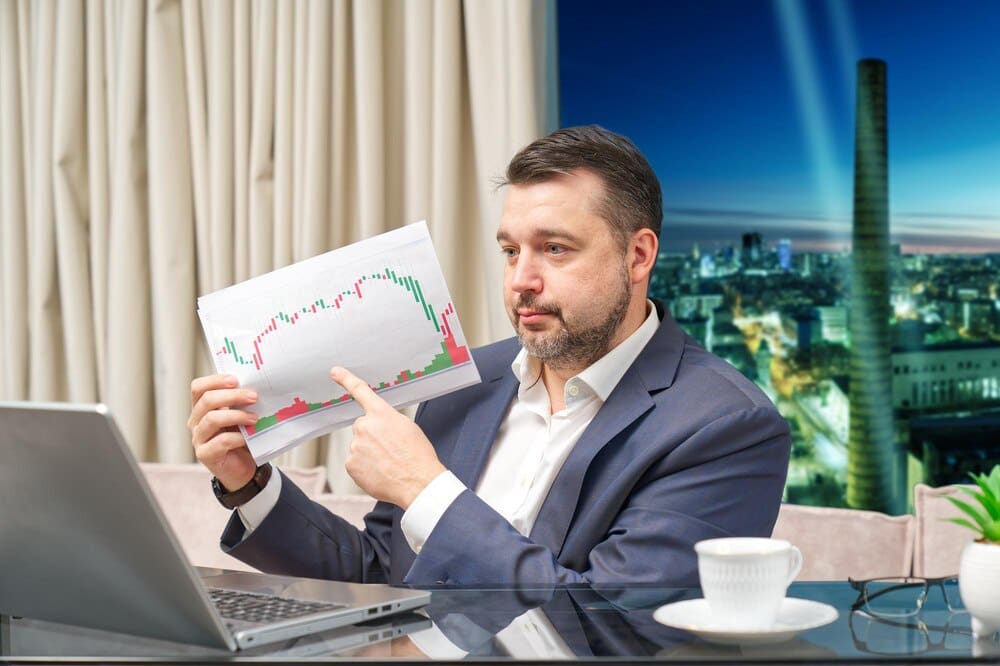For everyday investors seeking a straightforward, effective, and low-cost path to building long-term wealth, index fund investing has become the cornerstone of modern personal finance. This strategy involves buying funds that, by design, don’t try to beat the stock market but instead aim to mirror the performance of a specific market index, such as the S&P 500. Championed by legendary investors and accessible through nearly any brokerage, this passive approach allows individuals to achieve broad diversification and capture market returns, making it a powerful tool for anyone planning for retirement, education, or other major financial goals.
What Exactly Is an Index Fund?
At its core, an index fund is a type of mutual fund or exchange-traded fund (ETF) with a portfolio constructed to match or track the components of a financial market index. An index is simply a collection of investments—like stocks or bonds—that represents a portion of the overall market.
Think of the S&P 500, a famous index that includes 500 of the largest publicly traded companies in the United States. An S&P 500 index fund will hold shares in all 500 of those companies in the same proportions as the index itself. When you invest in that fund, you are effectively buying a small, diversified slice of the entire U.S. large-cap stock market.
This approach is known as passive investing. The fund manager’s job is not to pick winning stocks or time the market. Their sole objective is to ensure the fund’s performance tracks the underlying index as closely as possible. This stands in stark contrast to active investing, where a fund manager actively buys and sells securities in an attempt to outperform the market, a feat that is notoriously difficult to achieve consistently.
The Overwhelming Advantages of Index Fund Investing
The popularity of index funds isn’t accidental; it’s built on a foundation of clear, demonstrable benefits that resonate with both novice and experienced investors alike.
The Power of Low Costs
Perhaps the most significant advantage of index funds is their remarkably low cost. Because there is no need for a team of high-paid analysts to research and select individual stocks, the operational costs are minimal. This is reflected in the fund’s expense ratio—an annual fee expressed as a percentage of your investment.
Actively managed funds might have expense ratios of 0.75%, 1.00%, or even higher. In contrast, many broad-market index funds from providers like Vanguard, Fidelity, and Charles Schwab boast expense ratios of 0.05% or less. While this difference may seem small, it compounds into a massive sum over decades. A 1% difference in fees on a $100,000 portfolio costs you $1,000 per year, money that is no longer growing and compounding for your future.
Instant and Broad Diversification
The old adage “don’t put all your eggs in one basket” is the essence of diversification. Index funds are the ultimate tool for achieving this. By purchasing a single share of a total stock market index fund, you can gain ownership in thousands of different companies across various industries.
This built-in diversification dramatically reduces your risk. If one or even a few companies within the index perform poorly, their negative impact is cushioned by the thousands of other companies in the fund. This protects you from the catastrophic losses that can occur when investing heavily in just a handful of individual stocks.
Simplicity and Ease of Management
Index fund investing is the antidote to the complexity and stress that often accompany stock picking. You don’t need to spend hours researching company balance sheets, listening to earnings calls, or worrying about daily market news.
The strategy is beautifully simple: select a few low-cost, broad-based index funds that align with your risk tolerance and time horizon, and then contribute to them consistently over time. This “set it and forget it” nature frees you to focus on the things you can control, like your savings rate and long-term financial plan.
Consistent, Market-Matching Performance
While index funds will never “beat the market,” historical data overwhelmingly shows that most active fund managers fail to do so either, especially over long periods. S&P’s regular SPIVA (S&P Indices Versus Active) reports consistently find that a large majority of actively managed funds underperform their benchmark indexes.
By choosing an index fund, you are accepting the market’s return. Given that the market itself has historically trended upward over the long run, securing that return—minus a tiny fee—is a winning proposition. You trade the faint hope of outperformance for the high probability of achieving solid, market-driven growth.
Understanding the Main Types of Index Funds
The world of index funds is vast, but most investors can build a robust portfolio using just a few core types. They are typically categorized by the asset class they track.
Stock Index Funds
These are the most common type of index fund and form the growth engine of most portfolios.
- Total Stock Market Funds: These funds aim to track the entire U.S. stock market, including large, mid-sized, and small companies. Examples include funds tracking the CRSP US Total Market Index or the Dow Jones U.S. Total Stock Market Index.
- S&P 500 Funds: As mentioned, these track 500 of the largest U.S. companies and are a proxy for the large-cap market. They are slightly less diversified than a total market fund but are very popular.
- International Stock Funds: To diversify beyond the U.S., these funds track indexes of foreign stocks. They can be broad (Total International) or focused on developed markets (like Europe and Japan) or emerging markets (like China and Brazil).
Bond Index Funds
Bonds provide stability and income to a portfolio, acting as a counterbalance to the volatility of stocks. They are a crucial component for managing risk, especially as you approach retirement.
- Total Bond Market Funds: Much like their stock counterparts, these funds provide exposure to the entire U.S. investment-grade bond market, including government and corporate bonds of various maturities.
- Government Bond Funds: These funds invest exclusively in debt issued by the U.S. Treasury and other government agencies. They are considered among the safest investments in the world.
Mutual Funds vs. ETFs: What’s the Difference?
Index funds come in two primary structures: traditional mutual funds and exchange-traded funds (ETFs). While they often track the exact same indexes, they have key structural differences.
- Trading: Mutual funds are priced and traded only once per day, after the market closes. ETFs, on the other hand, trade on an exchange just like individual stocks, with their prices fluctuating throughout the day.
- Minimums: Mutual funds often have a minimum initial investment, which can be a few thousand dollars (though some brokerages have lowered or eliminated these). ETFs can be purchased for the price of a single share.
- Tax Efficiency: In a taxable brokerage account, ETFs are generally more tax-efficient. Their unique creation-and-redemption process typically results in fewer taxable capital gains distributions for investors compared to mutual funds.
How to Get Started with Index Fund Investing
Beginning your index fund journey is a straightforward, three-step process.
1. Open a Brokerage Account
You need an investment account to buy and hold your funds. The best options for most people are low-cost brokerage firms like Vanguard, Fidelity, or Charles Schwab. These firms were pioneers in making index funds accessible and offer a wide selection of their own commission-free funds with ultra-low expense ratios.
You can open various types of accounts, including a standard taxable brokerage account or, more commonly, a tax-advantaged retirement account like a Roth IRA or a Traditional IRA.
2. Choose Your Funds and Asset Allocation
For most people, a simple “three-fund portfolio” is an excellent starting point. This strategy, popularized by the Bogleheads community of investors, typically consists of:
- A U.S. Total Stock Market Index Fund
- An International Total Stock Market Index Fund
- A U.S. Total Bond Market Index Fund
Your asset allocation—the percentage you dedicate to each fund—depends on your age, risk tolerance, and time horizon. A younger investor might choose an aggressive allocation like 80% stocks (split between U.S. and international) and 20% bonds. An investor nearing retirement might opt for a more conservative 50/50 split to reduce volatility.
3. Fund Your Account and Automate
Once your account is open and you’ve selected your funds, the final step is to invest your money. You can start with a lump-sum investment or use a strategy called dollar-cost averaging, where you invest a fixed amount of money at regular intervals (e.g., $200 every month).
Automating your investments is a powerful behavioral tool. By setting up automatic transfers and investments, you remove emotion from the process and ensure you are consistently building your portfolio, buying more shares when prices are low and fewer when they are high.
A Final Word on a Proven Strategy
Index fund investing is not a get-rich-quick scheme. It will not deliver overnight fortunes or exciting stories of picking the next big stock. Instead, its power lies in its discipline, its simplicity, and its unwavering focus on the long term. By harnessing the growth of entire markets, keeping costs to a bare minimum, and leveraging the power of diversification, index funds provide a reliable and proven path toward achieving your most important financial goals.







